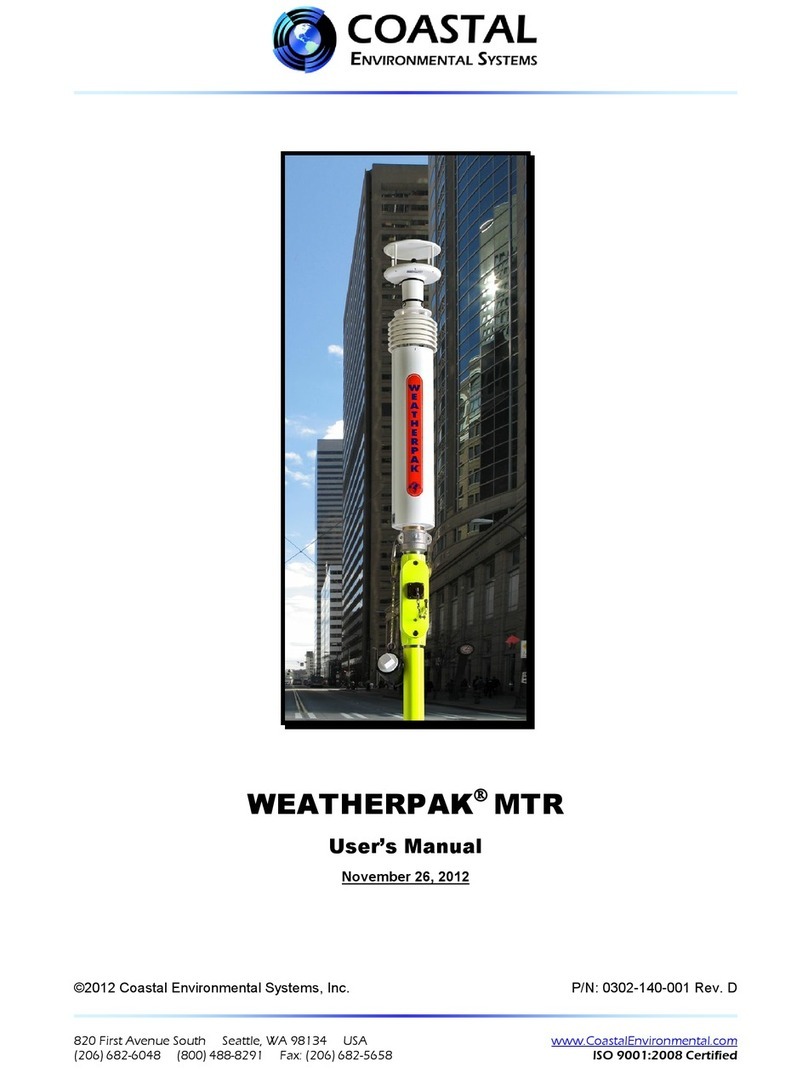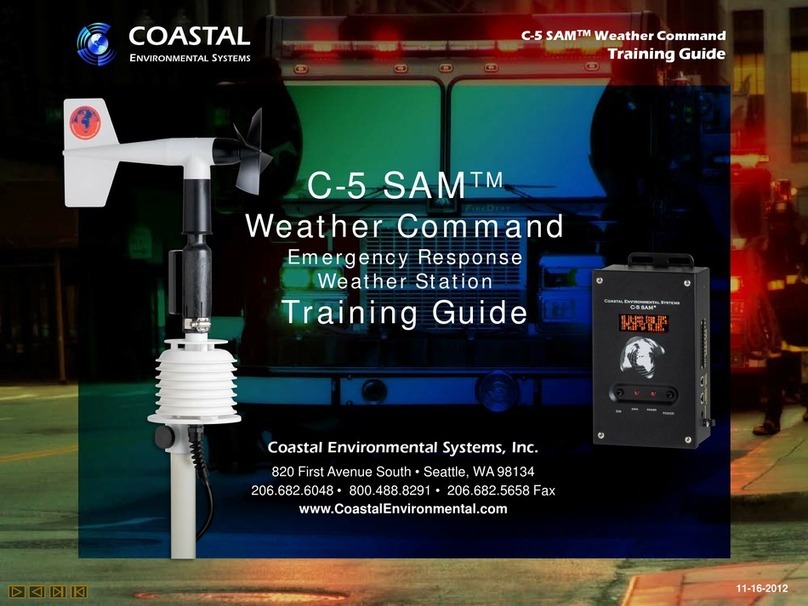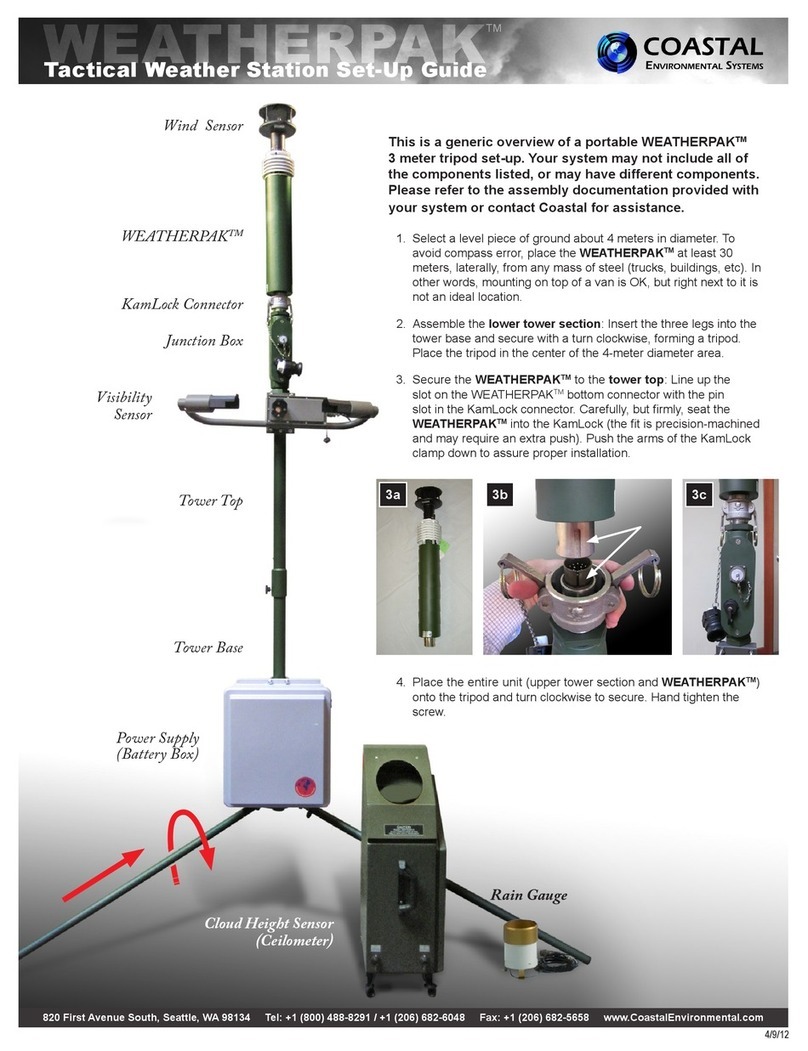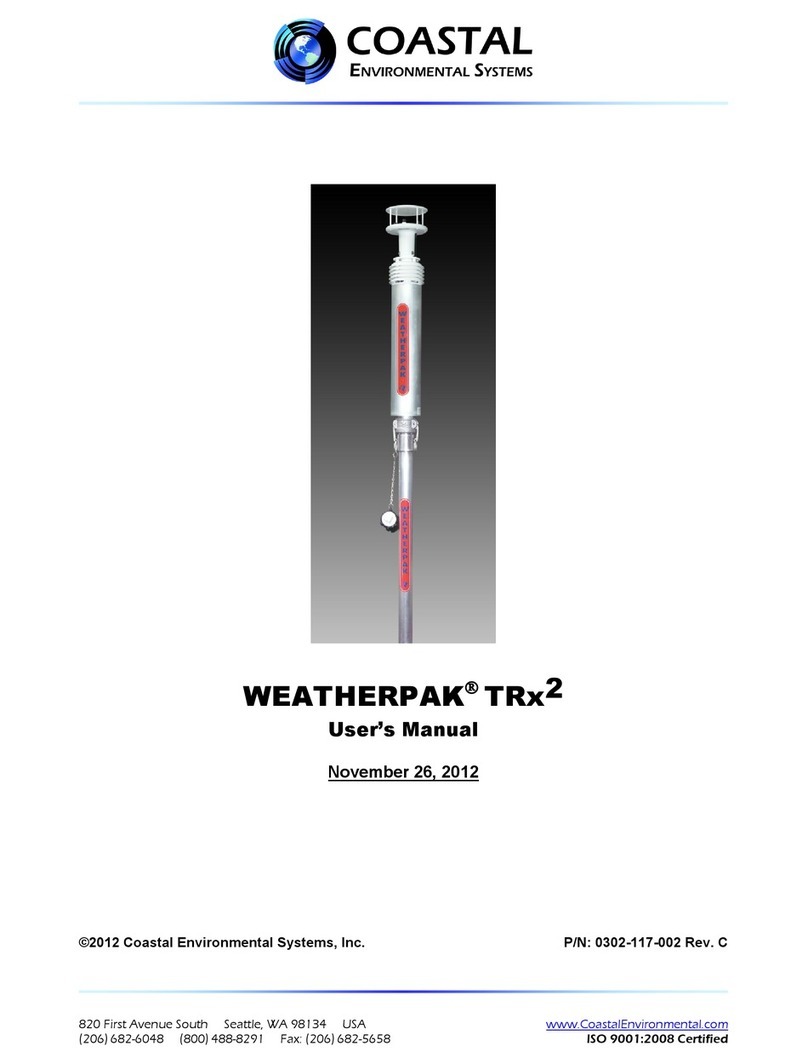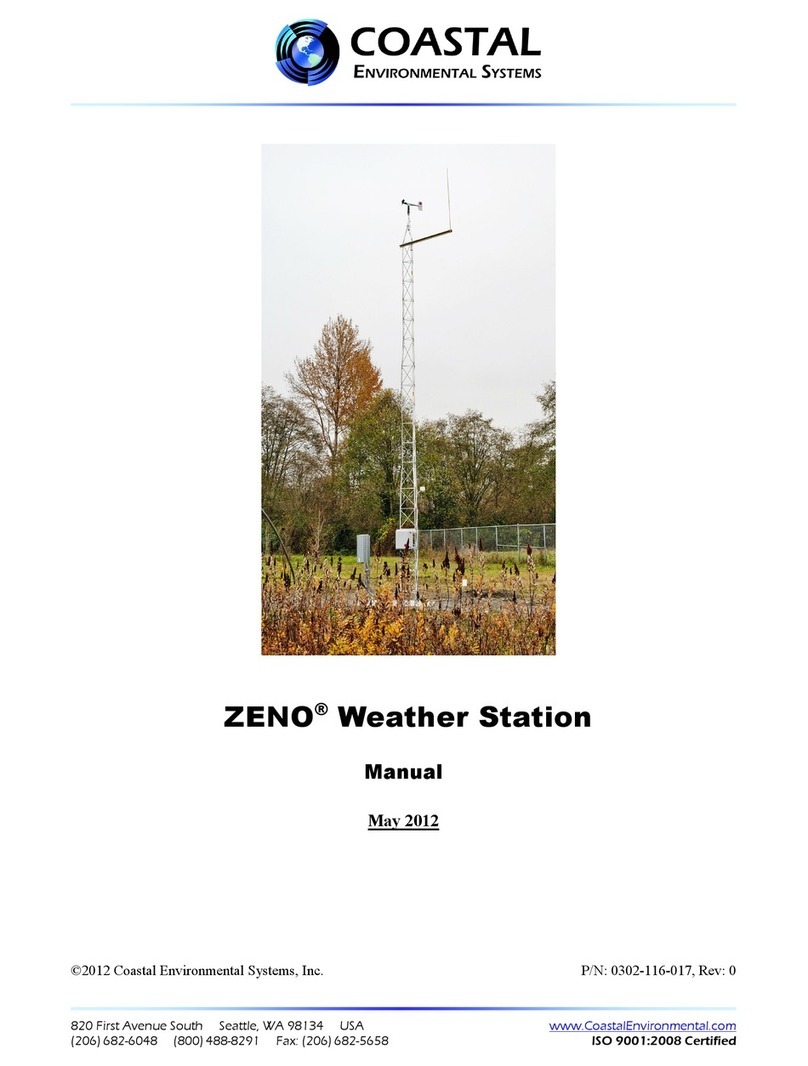
WEATHERPAK®TRx
USER’S MANUAL
P/N: 0302-109-011 Rev. B 3
1.0 INTRODUCTION
A WEATHERPAKTRx measures the air temperature and the speed, direction and stability
class of the wind. As an option, it can measure barometric pressure and relative humidity.
Information is sampled every 2 seconds and then computed into a 5-minute running average.
The data is then transmitted to you every 30 seconds for an updated line of data.
A WEATHERPAKTRx is suitable for extremely portable use when mounted on a van or a
portable tower. It can also be mounted at a fixed site, such as an industrial plant.
The WEATHERPAKwas designed with the following unique features for use in hazardous
materials response:
•A built-in electronic compass allows the WEATHERPAKto be set up in any orientation – it
will automatically determine true North and give you true wind direction. 1
•Setup time is under two minutes.
•When the unit is assembled, there are no electrical connections that can spark.
•The housing is constructed of 6061-T6 aluminum that is non-corrosive and will not spark if
dropped or struck.
•The housing is sealed and dried with desiccant to protect the electronics against moisture.
This means that the WEATHERPAKcan easily withstand decontamination procedures.
•A beeper in the tower sounds when battery replacement is required because of low voltage in
the battery pack. 2
•All of the electronics are grounded at a single point to protect the WEATHERPAKagainst
unexpected large voltages and radio interference.
This manual will familiarize you with the installation, operation and maintenance of a
WEATHERPAKTRx. Please read all of the instructions before attempting to operate or
troubleshoot the WEATHERPAK.
__________________________
1The variation of True North from magnetic North is entered into your WEATHERPAKfor your location. It is
easily changed, but should not be done so without first consulting Coastal Environmental Systems. (requires test
cable)
2 The WEATHERPAKmust be installed for the beeper to function.












